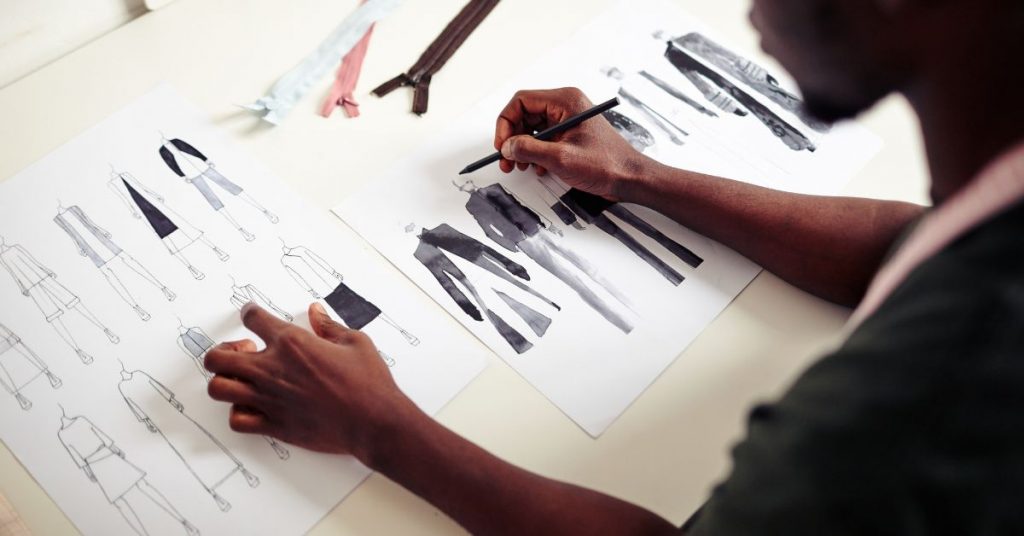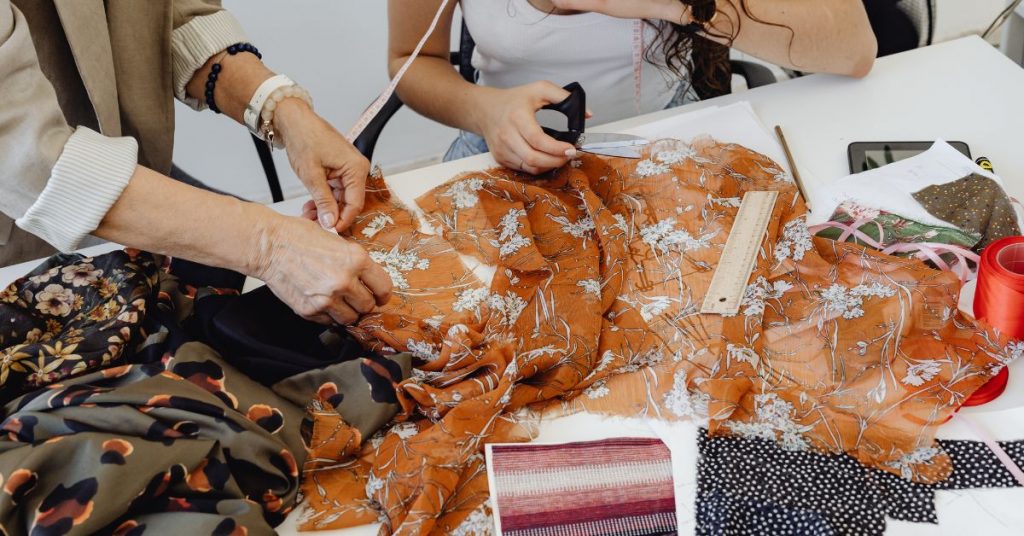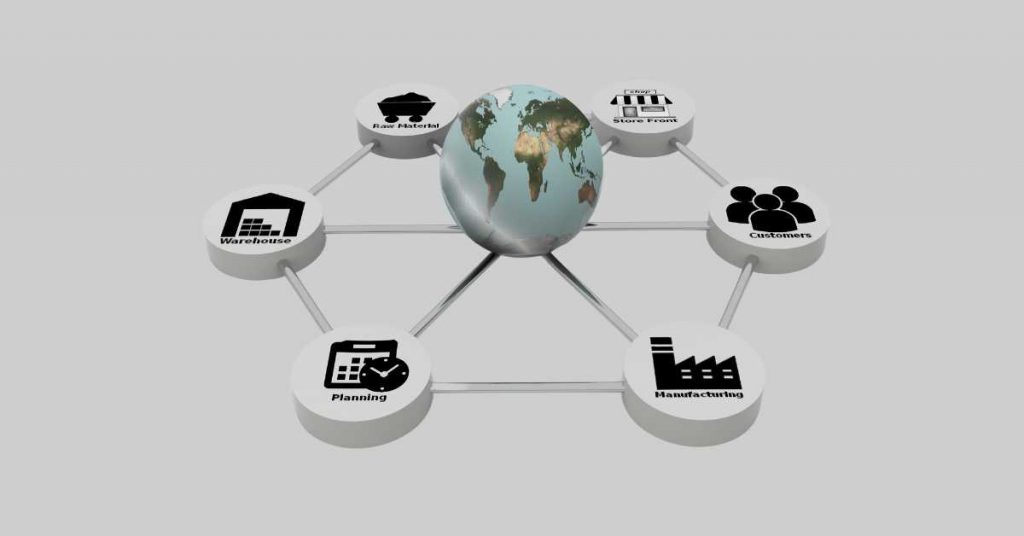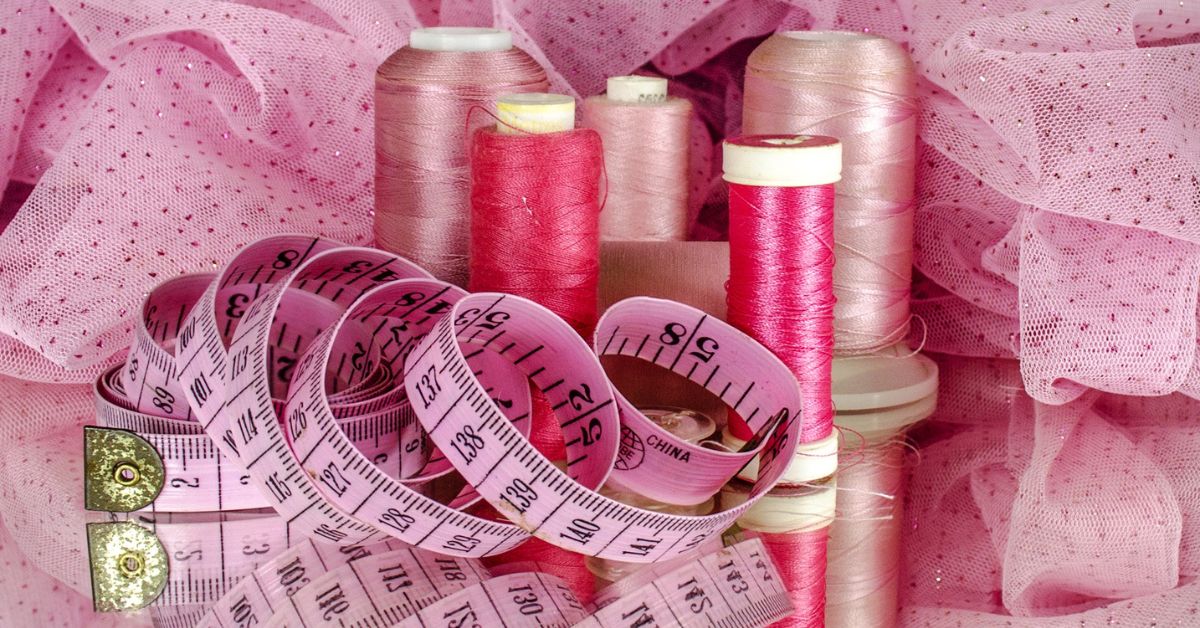In the fast-paced and ever-evolving world of fashion design, staying ahead of trends while maintaining efficiency and sustainability is a constant challenge. AgileSourcing has emerged as a transformative tool for fashion designers, offering a suite of AI-driven solutions that streamline the design process, enhance creativity, and support sustainable practices. Here’s a deep dive into what makes AgileSourcing the ultimate tool for fashion designers and how it’s reshaping the industry.
1. AI-Driven Design Generation

AI-driven design generation is revolutionizing the fashion industry by streamlining the creative process and enabling designers to explore a broader range of design possibilities with unprecedented speed and precision. At its core, AI-driven design generation utilizes advanced algorithms and machine learning to assist designers in creating, refining, and optimizing fashion designs.
AgileSourcing employs cutting-edge AI technology to transform the traditional design process, which often involves time-consuming sketching and prototyping. Instead, designers can input basic parameters such as preferred colors, patterns, and silhouettes into the platform. The AI then generates a variety of design options based on these inputs, offering multiple variations and iterations within minutes. This accelerated process allows designers to explore a wide range of creative ideas without the limitations of manual design techniques.
One of the significant benefits of AI-driven design generation is its ability to analyze large datasets, including past fashion trends, consumer preferences, and market demands. By leveraging this data, AI tools can provide design recommendations that are not only innovative but also aligned with current market trends. For instance, AI can identify emerging styles or popular fabric choices and incorporate these insights into the generated designs. This data-driven approach helps ensure that the designs resonate with the target audience and meet contemporary fashion standards.
Additionally, AI-driven design generation facilitates rapid iteration. Designers can quickly modify design elements and instantly see the results of these changes. This iterative process allows for more efficient refinement of designs, enabling designers to fine-tune details and experiment with different aesthetics without the need for physical prototypes. By reducing the time spent on repetitive tasks, AI frees up designers to focus on more strategic and creative aspects of their work.
The integration of AI also enhances collaborative design efforts. Designers can share AI-generated design options with team members or stakeholders, gather feedback, and make data-informed adjustments. This collaborative approach ensures that designs are refined based on collective input, leading to more cohesive and well-rounded fashion collections.
AI-driven design generation, as offered by AgileSourcing, significantly enhances the fashion design process by providing fast, data-driven, and versatile design solutions. By automating the creation and iteration of designs, AI allows designers to focus on creativity and strategic decision-making, ultimately leading to more innovative and market-relevant fashion collections.
2. Predictive Trend Analysis

Predictive trend analysis is a powerful tool in the fashion industry, providing brands with the foresight needed to stay ahead of market trends and consumer preferences. By leveraging artificial intelligence (AI), this technology enables fashion designers and brands to anticipate future trends with greater accuracy and make informed decisions about their collections.
AgileSourcing employs AI-driven predictive trend analysis to analyze vast amounts of data from various sources, including social media, search engine trends, fashion shows, and consumer behavior. AI algorithms sift through this data to identify patterns, correlations, and emerging trends. For example, the system can detect a growing interest in a particular color, fabric, or style by analyzing social media mentions and online searches. This allows brands to align their design strategies with these emerging trends, ensuring their collections are both timely and relevant.
One of the primary advantages of predictive trend analysis is its ability to provide real-time insights. Unlike traditional trend forecasting methods, which often rely on historical data and subjective intuition, AI offers up-to-date information on current and future trends. This real-time capability helps brands react swiftly to changing market conditions and consumer preferences, reducing the risk of designing collections that are out of sync with market demands.
AI also enhances the accuracy of trend predictions by analyzing consumer behavior and market dynamics. For instance, AI can track shifts in consumer spending, preferences, and purchasing patterns, offering insights into which trends are gaining traction. This data-driven approach helps designers make strategic decisions about their collections, from selecting fabrics and colors to determining the most popular styles.
Additionally, predictive trend analysis supports strategic planning by providing long-term forecasts of fashion trends. AI can analyze historical data and current trends to project future developments, allowing brands to plan their collections and marketing strategies well in advance. This foresight helps brands stay competitive and position themselves as trendsetters in the industry.
Predictive trend analysis powered by AI, as implemented by AgileSourcing, offers fashion brands valuable insights into emerging trends and consumer preferences. By providing real-time, data-driven forecasts, AI enables brands to make informed decisions, align their designs with market demands, and stay ahead in a dynamic and competitive fashion landscape.
3. Personalized Designs at Scale

Personalized designs at scale represent a major shift in the fashion industry, where individual preferences and customizations are seamlessly integrated into mass production processes. AgileSourcing leverages artificial intelligence (AI) to enable fashion brands to offer personalized fashion options to a broad audience efficiently, combining the best of customization with large-scale production capabilities.
Traditionally, personalization in fashion was limited to high-end or bespoke services due to the complexities and costs associated with custom tailoring. However, AgileSourcing’s AI-driven platform changes this paradigm by allowing brands to create unique, personalized designs for a large number of customers without sacrificing efficiency. The platform uses AI algorithms to analyze customer data, including preferences, past purchases, and style choices, to generate individualized design options.
For example, customers can use AgileSourcing’s platform to select their preferred colors, fabrics, and patterns, and AI then creates multiple design iterations based on these inputs. This capability allows designers to offer a level of customization previously reserved for high-end markets, making personalized fashion accessible to a wider audience. AI tools ensure that each design aligns with the customer’s preferences, leading to higher satisfaction and a stronger connection between the brand and its customers.
The scalability of AI-driven personalization is further enhanced by its ability to handle large volumes of data and orders. The platform processes individual customer preferences and integrates them into the production pipeline, allowing for efficient manufacturing of customized garments. This means that while each design is tailored to specific customer needs, the production process remains streamlined and cost-effective.
Additionally, AgileSourcing’s platform can offer dynamic customization options where customers interact with design tools to make real-time adjustments to their garments. For instance, users can preview different design elements and make changes on-the-fly, with AI providing instant feedback on how these adjustments affect the overall design. This interactive experience not only enhances customer engagement but also ensures that the final product perfectly matches their expectations.
AgileSourcing’s AI-powered tools make personalized designs at scale possible by combining advanced data analysis, real-time customization, and efficient production processes. This approach democratizes personalized fashion, allowing brands to offer unique, tailored designs to a large customer base while maintaining operational efficiency and cost-effectiveness.
4. Optimized Material Selection for Sustainability

Optimized material selection for sustainability is a critical component of modern fashion design, as brands increasingly strive to reduce their environmental impact. AgileSourcing utilizes artificial intelligence (AI) to assist fashion brands in choosing materials that align with sustainability goals while ensuring high quality and performance.
AI-driven platforms like AgileSourcing offer advanced tools for analyzing the environmental impact of various fabrics and materials. These tools evaluate a range of factors, including carbon footprint, water usage, and biodegradability, to help designers select materials that are both sustainable and suitable for their designs. For instance, AI can compare the environmental effects of using recycled polyester versus conventional polyester, providing insights into which option has a lower environmental impact.
One of the key benefits of AI in material selection is its ability to facilitate data-driven decision-making. Instead of relying on subjective assessments or limited data, designers can access comprehensive, real-time information on the sustainability of different materials. This data includes detailed life cycle analyses and environmental certifications, enabling designers to make informed choices that support their sustainability objectives.
AI also aids in the identification of sustainable alternatives. By analyzing existing material databases and research, AI can recommend eco-friendly options such as organic cotton, Tencel, or innovative biodegradable fabrics. This helps designers incorporate sustainable materials into their collections without compromising on aesthetics or functionality.
Additionally, AgileSourcing’s AI tools support supply chain transparency, allowing brands to trace the origins of materials and ensure they are sourced from responsible suppliers. AI can track and verify certifications, monitor supplier practices, and provide insights into the environmental and social impact of material sourcing. This transparency helps brands maintain high ethical standards and build trust with consumers.
Moreover, AI optimizes material usage during production. By analyzing design patterns and production techniques, AI can suggest ways to reduce fabric waste and improve efficiency. For example, AI can recommend cutting layouts that maximize the use of fabric, minimizing off-cuts and reducing waste.
AgileSourcing’s AI-powered tools for optimized material selection empower fashion brands to make more sustainable choices by providing detailed environmental data, recommending eco-friendly alternatives, ensuring supply chain transparency, and enhancing material efficiency. This approach supports the creation of fashion collections that are not only stylish and high-quality but also environmentally responsible.
5. On-Demand Production for Reducing Waste

On-demand production is a transformative approach that significantly reduces waste in the fashion industry by aligning manufacturing with actual consumer demand. This method, facilitated by AgileSourcing, leverages artificial intelligence (AI) to create a more efficient and sustainable production process.
In traditional fashion manufacturing, brands often produce large quantities of garments based on forecasted demand, leading to overproduction and excess inventory. Unsold items frequently end up in landfills or are heavily discounted, resulting in significant environmental waste and financial loss. On-demand production addresses this issue by producing garments only when an order is placed. This approach minimizes the risk of overproduction and ensures that every item manufactured has a confirmed buyer.
AgileSourcing utilizes AI to enhance on-demand production by offering real-time demand forecasting. AI algorithms analyze data from various sources, such as online shopping trends, social media activity, and historical sales data, to predict consumer demand accurately. By providing insights into which products are likely to be popular, AI helps brands make informed decisions about what to produce and in what quantities. This data-driven approach ensures that production levels are closely aligned with actual market demand, reducing the likelihood of excess inventory.
Additionally, AI-driven on-demand production supports customization and personalization at scale. Consumers increasingly seek unique and tailored fashion items, and on-demand production allows brands to meet these demands without the risks associated with traditional mass production. AgileSourcing’s platform enables customers to select specific design elements, such as colors, fabrics, and sizes, which are then used to create customized garments only after the order is placed. This personalized approach not only enhances customer satisfaction but also reduces waste by ensuring that only products that match customer preferences are produced.
The environmental benefits of on-demand production are significant. By minimizing the volume of unsold stock, brands reduce the amount of waste generated from excess production. Additionally, on-demand production decreases the need for large-scale warehousing and logistics operations, further contributing to sustainability by lowering the carbon footprint associated with transportation and storage.
AgileSourcing’s on-demand production model, supported by AI, offers a sustainable alternative to traditional manufacturing methods. By aligning production with real-time consumer demand and enabling customization, this approach reduces waste, enhances operational efficiency, and supports a more environmentally friendly fashion industry.
6. AI-Powered Supply Chain Transparency

AI-powered supply chain transparency is a game-changer in the fashion industry, providing brands with the tools they need to ensure ethical practices and sustainability throughout their supply chains. AgileSourcing harnesses the power of artificial intelligence (AI) to offer comprehensive visibility and control over every stage of the supply chain, from raw material sourcing to final production.
Supply chain transparency is essential for fashion brands that aim to uphold high standards of ethics and sustainability. Traditional supply chains often involve complex networks of suppliers and processes, making it challenging for brands to monitor and verify the environmental and social impacts of their operations. AI addresses these challenges by offering advanced tools that track and analyze data from multiple sources, providing a clear and detailed view of the supply chain.
AgileSourcing’s AI tools gather and process data from various stages of the supply chain, including material sourcing, manufacturing, and logistics. AI algorithms analyze this data to assess the environmental impact of different materials, verify supplier practices, and monitor compliance with ethical standards. For example, AI can track the carbon footprint of materials, ensuring that brands choose sustainable options and reducing their overall environmental impact.
One of the key benefits of AI-powered supply chain transparency is its ability to verify supplier credentials and certifications. AI systems can cross-reference supplier claims with industry standards and certifications, such as fair labor practices and eco-friendly certifications. This verification process ensures that brands only work with suppliers who meet their ethical and sustainability criteria, enhancing the integrity of their supply chains.
AI also facilitates real-time monitoring of supply chain operations. Brands can track the movement of materials and finished products, monitor production processes, and identify potential issues before they escalate. This real-time visibility allows for quicker response to supply chain disruptions and helps brands maintain high standards of quality and compliance.
Additionally, AI-powered transparency supports consumer trust. By providing detailed information about the origins and impacts of products, brands can build credibility with consumers who are increasingly concerned about sustainability and ethical practices. AgileSourcing’s platform allows brands to share this information with their customers, fostering transparency and accountability.
AI-powered supply chain transparency, as offered by AgileSourcing, provides fashion brands with the tools to monitor, verify, and optimize their supply chains effectively. By leveraging AI to enhance visibility, verify supplier practices, and support real-time monitoring, brands can uphold high standards of ethics and sustainability while building trust with consumers.
7. Virtual Prototyping to Reduce Sample Waste

In the fashion industry, the traditional process of creating physical prototypes is both time-consuming and resource-intensive, often leading to substantial fabric waste. Virtual prototyping, a technology supported by AgileSourcing, offers a sustainable alternative that significantly reduces material waste while enhancing the efficiency of the design process.
Virtual prototyping leverages artificial intelligence (AI) and advanced 3D modeling to create digital representations of fashion designs. Instead of crafting multiple physical samples to test different design variations, designers can use AI-powered tools to generate and visualize prototypes in a virtual environment. This shift from physical to digital prototyping brings several key benefits:
- Reduction in Material Waste: Traditional prototyping requires substantial amounts of fabric and resources. Each physical sample involves cutting, sewing, and often discarding large amounts of material. Virtual prototyping eliminates the need for these physical samples by allowing designers to test and refine their designs digitally. As a result, there is a significant reduction in fabric waste and associated environmental impact.
- Enhanced Design Flexibility: With virtual prototyping, designers can rapidly experiment with different design elements, such as colors, fabrics, and patterns, without the constraints of physical materials. AI-powered tools allow for real-time adjustments and iterations, enabling designers to explore a wide range of creative possibilities quickly. This flexibility accelerates the design process and fosters greater innovation.
- Cost Efficiency: Creating physical prototypes involves not only material costs but also labor and production expenses. Virtual prototyping reduces these costs by minimizing the need for physical samples. Designers can make adjustments and finalize their designs in the digital realm before committing to physical production, leading to cost savings and a more streamlined workflow.
- Faster Time-to-Market: Traditional sample development can delay the design-to-production timeline. Virtual prototyping speeds up this process by allowing designers to finalize their designs more quickly. With AI-driven simulations, designers can visualize how fabrics will behave and how garments will fit, making informed decisions faster and accelerating the overall time-to-market for new collections.
- Sustainability and Innovation: Virtual prototyping supports sustainability goals by reducing waste and conserving resources. It also encourages innovation by enabling designers to push the boundaries of creativity without the limitations imposed by physical materials. By integrating virtual prototyping into their workflows, fashion brands can align with eco-friendly practices while fostering a more dynamic and forward-thinking design process.
Virtual prototyping, as facilitated by AgileSourcing, offers a sustainable solution to traditional sample development by reducing material waste, enhancing design flexibility, and improving cost efficiency. By embracing this technology, fashion brands can accelerate their design processes, support environmental sustainability, and bring innovative designs to market more effectively.
AgileSourcing stands out as the ultimate tool for fashion designers due to its comprehensive suite of AI-driven features. From speeding up design generation and predicting trends to offering personalized designs and optimizing material selection, AgileSourcing provides designers with the tools they need to excel in a competitive and rapidly changing industry. By integrating AI into every stage of the fashion design process, AgileSourcing not only enhances creativity and efficiency but also supports sustainability and ethical practices. For fashion designers looking to stay ahead of the curve and create impactful, eco-friendly collections, AgileSourcing is an indispensable ally.





